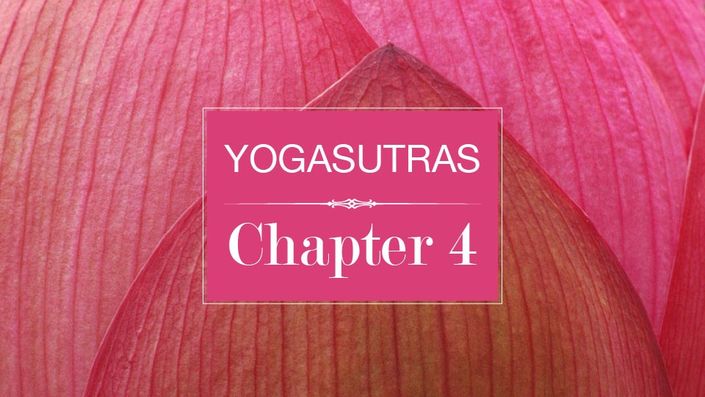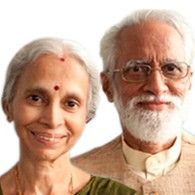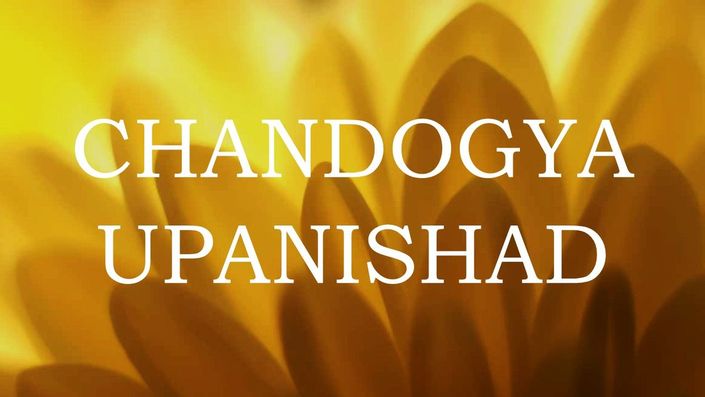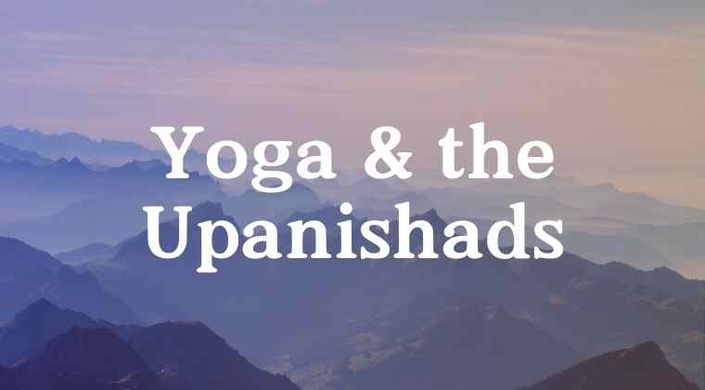
This course explains Chapter 4 of the Yoga Sutra, systematically and clearly, from a foundation of the traditional commentaries presented to you by A. G. Mohan and Indra Mohan..
In this chapter, aptly titled ‘Kaivalya Pada,’ Patanjali discusses the main goal of the practice of yoga - kaivalya or permanent peace.
This chapter explains the experiences or objects that are perceived (grahya), the instruments of perception (grahana) including the mind and how different it is from the experiences in it, and the I-feeling (grahita). How consciousness is different from the mind is also established in this chapter.
Course Videos
-
PreviewIntroduction to Fourth Chapter (4:06)
-
StartTwo Scholars never agree - Two Yogis never disagree (3:19)
-
StartThe means by which siddhis come about (3:22)
-
StartKey words in the Yogasutra and their equivalent Buddhist terminology (4:44)
-
StartHow does the transformation (parinamam) take place? (4:14)
-
StartWhat is the role of Dharma and Adharma in this transformation? (4:10)
-
StartHow does a yogi who has reached kaivalyam communicate? - Sutra 4. If he creates several minds, how does he control them? - Sutra 5 (4:19)
-
StartWhich of the five minds attaining siddhi leads to kaivalyam? - Sutra 6 (4:24)
-
StartWhy is it so? What are the pitfalls in other methods of attaining siddhi? - Sutra 7 (5:39)
-
StartHow do the latent impressions (vasanas) manifest through the three types of actions? - Sutra 8 (4:13)
-
StartHow do the vasanas arise and why do they continue over lifetimes? - Sutra 9 (3:33)
-
StartWhy are the vasanas eternal? - Sutra 10 (3:14)
-
StartHow are the vasanas held together? How can they become extinct?- Sutra 11 (4:37)
-
StartSummary of sutras 1 to 11 (8:11)
-
StartWhat exists can never become extinct. If so how can vasanas become extinct? - Sutra 12 (4:09)
-
StartObjects (grahyam) are in the seen or unseen form and consist of the three gunas. - Sutra 13 (3:36)
-
StartIf all objects are composed of three gunas, how is it we perceive the object as one? - Sutra 14 (3:58)
-
StartIf what is seen outside is common to all,why is it perceived different by each one? - Sutra 15 (2:57)
-
StartWhy cannot we say that the outside objects are projections of our mind like in a dream? - Sutra 16 (3:19)
-
StartIf seen/object is independent and always exists we should be able to perceive it at all times. Why then is it seen sometimes seen and not seen at other times? - Sutra 17 (2:48)
-
StartThe difference between the changing mind and Purusha Sutra 18 (2:53)
-
StartWhy can’t we say citta is self-illuminating (svabhasam) - Sutra 19 (3:33)
-
StartAnother reason why citta cannot be said to be self illuminating (svabhasam) Sutra 20 (3:30)
-
StartCitta need not be self-illuminating. But, can we not say that it is being illuminated by the previous citta? Sutra 21 (2:55)
-
StartIf there is an unchanging cit sakti apart from the citta, how can it cognize the citta? Sutra 22 (3:15)
-
StartHow does the citta be all powerful? Sutra 23 (2:49)
-
StartAlthough the citta is all powerful, it exists for the sake of the Purusha (parartham) Sutra 24 (3:22)
-
StartThe citta approaching the state of kaivalya Sutra 25 & 26 (3:59)
-
StartEven such a state of discernment (viveka khyati), can be disrupted by aviveka pratyayam - Sutra 27; Such thoughts (pratyayam) should be considered as klesas and have to be completely burnt out (kshinam) - Sutra 28 (4:29)
-
StartThen viveka khyati is firmly established and leads to Dharmamegha Samadhi - Sutra 29 (3:56)
-
StartWhat happens to the kleshas in Dharmamegha Samadhi? - Sutra 30 (2:58)
-
StartWhen Dharmamegha Samadhi is established the extent of the resultant knowledge(jnanam) is explained. - Sutra 31 (3:20)
-
StartIn this state of Dharmamegha Samadhi, the sequential operation (parinama kramam) of the three gunas ceases. Sutra 32 (4:52)
-
StartWhat is meant by progressive/sequential transformation (parinama kramam)? Sutra 33 (3:42)
Your Instructor (s)

A. G. Mohan was a student of "the father of modern yoga," Yogacarya Sri T. Krishnamacharya (1888-1989), for eighteen years. He is the author of several books on yoga, including Yoga for Body, Breath, and Mind; Yoga Reminder; Yoga Therapy; and Krishnamacharya: His Life and Teachings.
Read more for a detailed timeline of Mohan’s studies
Indra Mohan has been practicing and teaching yoga for more than three decades. Along with her husband A.G. Mohan, she continues to study and deepen her knowledge in yoga and related fields. She is one of the few people who received a post-graduate diploma in yoga from Krishnamacharya. Her profound understanding of yoga and Ayurveda and how it applies to all aspects of our health, particularly in the area of women’s’ health is inspirational.
Get started now!
Key features of the platform include:
About YogaKnowledge.net
YogaKnowledge.net is an online learning platform devoted to the dissemination of knowledge of yoga and other related disciplines through short, easy to understand video talks. Presented by A. G. Mohan and Indra Mohan, who for the last 40+ years have studied, practiced and taught according to the ancient foundations of yoga, these talks offer profound insight for all persons seeking personal transformation and meaning in their lives.




